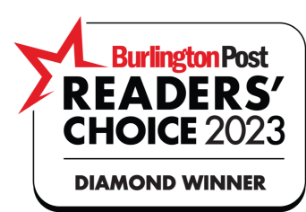Now that winter is in full swing, sufferers with asthma, hay fever or other outdoor allergies believe they can rest easy because their home is a safe haven from these external allergens. Unfortunately, nothing could be further from the truth since houses and apartment buildings harbor their own allergens, which become trapped and impossible to avoid.

Living Quarters Environment
The problem of allergens in your environment can vary. It’s dependent on the type and age of your home, temperature and humidity in the home, what you keep in your house (food to clothes to furniture) and who lives in the home (human, pet animal, and plant).
House Dust
Although some dust is present in every home, regardless of how often or how thoroughly the house is cleaned, dust is the main culprit for indoor allergies. That’s because house dust is an airborne mixture that might contain fine particles of soil and plant material from indoors or outdoors, particles of human and animal dander or hair, fabric fibers, mold spores, dust mites, fragments of insects that have died and their waste, food particles, and other debris.
Allergen Triggers
When these substances are in your home, you get an allergic sensitivity, which is a reaction of the immune system to foreign “invaders,” a substance or substances not native to your body. When the allergen particles come in contact with the linings of the eyes, nose, or airway of a susceptible person, a trigger is created, and an allergic reaction occurs.
Dust Mites
Dust mites can be found in most homes, usually in beds and bedding, upholstered furniture, or any cloth material. Sensitivity to dust mites and their waste particles can create a trigger.
Pet Dander
An allergic reaction may occur when around pets such as dogs, cats, gerbils, hamsters and other fur-bearing animals. The trigger is caused by substances in the animal’s saliva, urine and especially dander resulting in symptoms such as sneezing, stuffy nose, itchy eyes, and asthma.
Benefits of Duct Cleaning
Duct cleaning is the process of cleaning various heating and cooling system components of forced air systems. The procedure includes the supply and return of air through the registers, grilles, diffusers, heat exchangers, heating-cooling coils, condensate drain pans, fan motor and fan housing.
Since your heating and cooling system is the lungs of your home that allows the system to take air in and breathe it out, studies show that dirty heating and cooling coils, motors, and air handling units can make your HVAC unit less efficient.
Contaminants are pulled into the HVAC system and re-circulated 5 to 7 times per day, on average. Over time, this re-circulation causes a build-up of contaminants in the duct work and reduces the quality of air in your home.
Contaminants in the heating and cooling system cause it to work harder and shorten the life of your system. When an HVAC system is clean, it doesn’t have to work as hard to maintain the temperature you desire. As a result, less energy is used, leading to improved cost-effectiveness and healthier environment.
By having your ducts cleaned you:
- Create a Cleaner Living Environment
- Reduce Allergens and Irritants
- Help Everyone Breathe Easier
- Remove Unpleasant Smells and Odors
- Improve Air Flow Efficiency
Hire the Duct Cleaning Professionals:
Having your air ducts professionally cleaned helps your system operate at peak efficiency and provide the most cost-effective performance for your energy dollar. Let the professional at Kleen Rite help create a cleaner and safer environment in which you and your family can breathe easier. Contact us today for a quote for duct cleaning today. Kleen Rite operates in the Hamilton, >Halton, St. Catharines, and Kitchener/Waterloo area.

